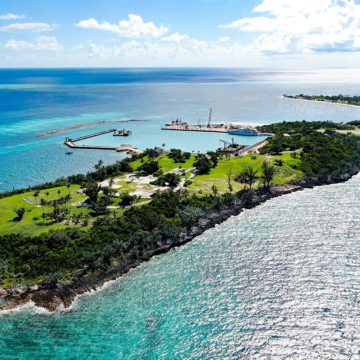Haiti: World Bank Strategy to Include Focus on Cholera, Housing, Energy
Above: a tent camp in Haiti (UN Photo/Logan Abassi)
By the Caribbean Journal staff
The World Bank has approved a new two-year strategy for the institution in Haiti.
The plan, which was endorsed by the bank’s Board of Directors, will include initiatives such as providing 1.5 million people with cholera education and prevention, repairing and reconstructing homes for 45,000 Haitians and improving electricity access for 600,000 people, along with a plan to finance tuition for $100,000 Haitian children every year, among others.
“Almost three years after the devastating earthquake, we continue to invest in reconstruction, basic health and education services, which remain vital to address the urgent needs of Haitian,” said Hasan Tuluy, the World Bank’s president for Latin America and the Caribbean. “In addition, under this interim strategy, we support the government in its transition from emergency response to longer-term development. This means helping to build capacity and institutions, and improving the conditions for private investment and economic development outside of Port-au-Prince.”
So-called “decentralization,” or expanding development outside of Haiti’s capital, has been a major stated priority by Haiti President Michel Martelly’s administration.
Among other plans by the Bank include restoring historical sites and promoting tourism in Haiti’s north, supporting ante- and pre-natal care for approximately 500,000 Haitian women and improving the country’s agricultural sector.
The former has been part of a push by Haiti’s Tourism Ministry, as it seeks to capitalize on sites like the Citadel near Milot.
Last week, for the first time, Haiti established a government unit to manage operations at the sites, which are part of Haiti’s National History Park.
“Our proximity to large markets and substantial opportunities for agriculture and tourism development provide Haiti with a real potential for growth,” said Haiti Economy Minister Carmelle Jean-Marie. “To capitalize on this potential, we will work with the Bank and other partners to deepen public sector reforms and governance, accelerate reconstruction and improve the business environment, all along with a deep and constant concern about employment and poverty reduction issues.”
As part of the two-year plan, the Bank authorized $125 million in funding for two projects: the first consists of $90 million for an energy project targeting 600,000 people in urban and rural ares and looking to promote green energy.
Approximately 25 percent of Haiti’s population has access to electricity services.
The second, $35 million infrastructure plan, will finance projects including management of earthquake debris in Port-au-Prince, a road works project to link road segments in the north and the improvement of Port-au-Prince airport.
The January 2010 earthquake caused damage and losses of $7.9 billion, according to the Bank. That figure represents 120 percent of Haiti’s GDP at the time.
But despite progress in reconstruction, 360,000 people still remain in tent camps out of 1.5 million displaced by the quake.







